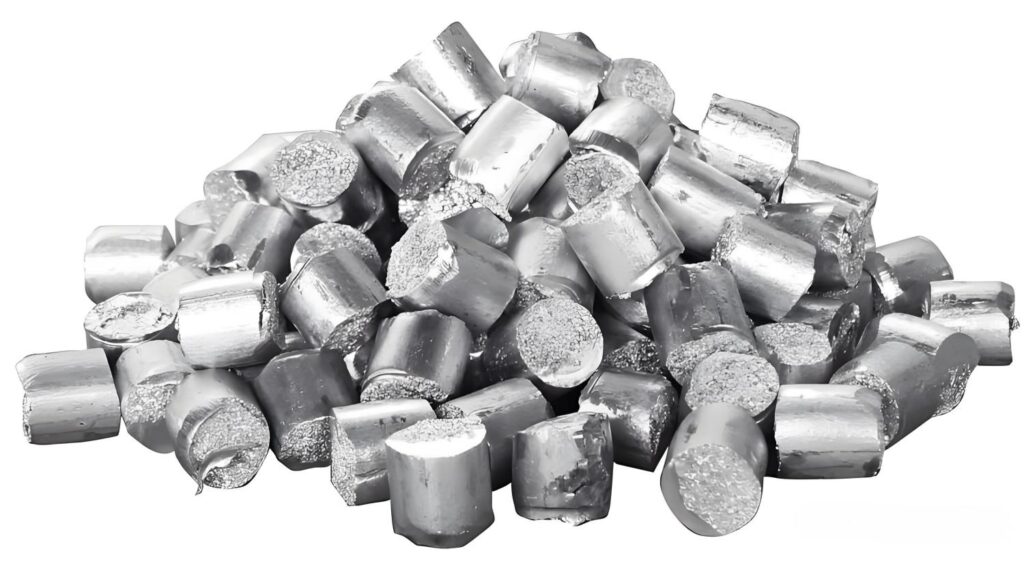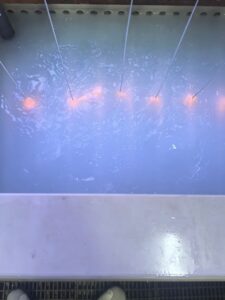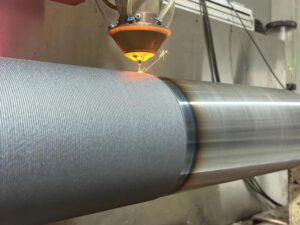Zinc is one of the most widely used non-ferrous metals in industry. From galvanizing steel to creating versatile alloys, it plays a vital role in modern manufacturing. Understanding the melting point of zinc is essential for engineers, manufacturers, and businesses working with precision machining or casting processes. This article explores zinc’s properties, its melting temperature, and its significance in industrial applications.
What is Zinc?
Zinc is a bluish-silver metal, ranking as the fourth most commonly used industrial metal after iron, aluminum, and copper. It belongs to Group 12 of the periodic table, with the chemical symbol Zn and an atomic number of 30.
Zinc has been known for centuries, with evidence of its use in brass alloys dating back to ancient civilizations. In its pure form, zinc is relatively brittle at room temperature but becomes malleable between 100°C and 150°C. Its natural corrosion resistance makes it particularly valuable in protective coatings, most notably galvanization, where a thin layer of zinc protects steel from rusting.
Zinc’s ability to alloy with other metals has also made it indispensable in die-casting, battery manufacturing, and the creation of specialized materials for automotive and aerospace industries.
What is the Melting Point of Zinc?
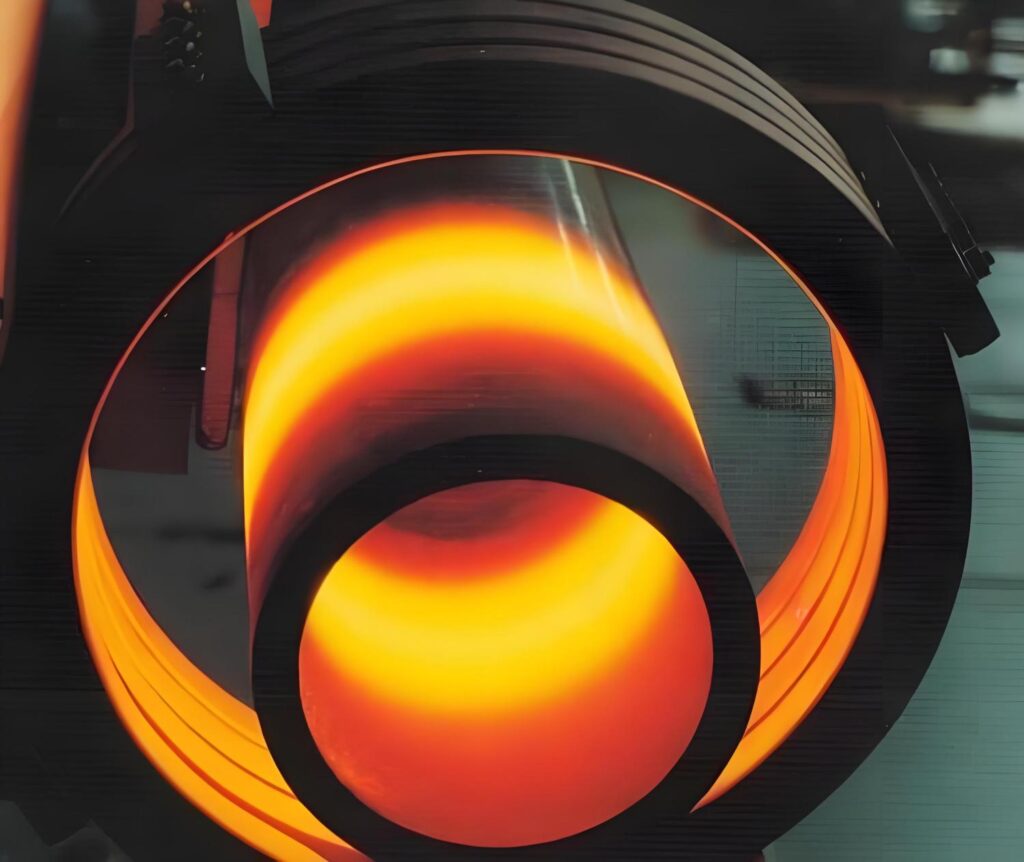
The melting point of pure zinc is 419.5°C (787.1°F). This relatively low melting temperature makes zinc easy to cast, mold, and recycle. For comparison, aluminum melts at around 660°C, while iron requires temperatures above 1,500°C.
The moderate melting point of zinc allows it to be processed using less energy than many other metals, which is beneficial in terms of cost efficiency and sustainability. Additionally, the manageable temperature range reduces wear on furnaces and molds, extending their service life in production environments.
Melting Point Ranges of Common Zinc Alloys
Zinc is rarely used alone in large-scale industrial settings. Instead, it is often alloyed with other metals to improve its strength, durability, or resistance to corrosion. These alloys have varying melting point ranges:
- Brass (Copper + Zinc): Melting range between 900°C and 940°C, depending on the copper-to-zinc ratio.
- Zamak (Zinc + Aluminum + Magnesium + Copper): A popular die-casting alloy with a melting range of 380°C to 390°C.
- Nickel Silver (Copper + Zinc + Nickel): Melts at around 900°C to 1,000°C, often used for decorative and functional items.
- Zinc-Aluminum Alloys: Melting ranges vary, but typically fall between 380°C and 430°C, offering a balance of toughness and fluidity.
These variations highlight how alloying zinc with other elements changes its properties and expands its industrial applications.
Why is the Melting Point of Zinc Important?
Understanding zinc’s melting point is crucial for several reasons:
- Casting and Manufacturing: Industries that rely on die-casting need precise temperature control to avoid defects and maintain efficiency.
- Alloy Development: The melting point determines how zinc interacts with other metals, influencing the strength and corrosion resistance of alloys.
- Energy Efficiency: Lower melting temperatures reduce fuel consumption in furnaces, which lowers costs and carbon emissions.
- Recycling: Zinc’s manageable melting point simplifies recycling processes, enabling recovered zinc to be reused in new products with minimal energy.
For manufacturers, these factors make zinc a practical and economical choice across a wide range of sectors.
Factors Influencing Zinc Melting Temperature
While pure zinc has a fixed melting point, several factors can influence its effective melting behavior:
- Purity of the Metal: Impurities such as lead, cadmium, or tin can slightly lower the melting temperature.
- Alloy Composition: Adding other metals changes the melting range, as seen in zinc-aluminum or zinc-copper alloys.
- Pressure and Environment: Although less pronounced than in some metals, pressure conditions may alter the melting dynamics of zinc during industrial processes.
- Oxidation and Surface Reactions: The formation of zinc oxide on the surface can impact heating efficiency in furnaces.
Manufacturers must account for these factors to maintain consistency and avoid errors in machining, smelting, or casting operations.
Applications of Zinc Melting Point
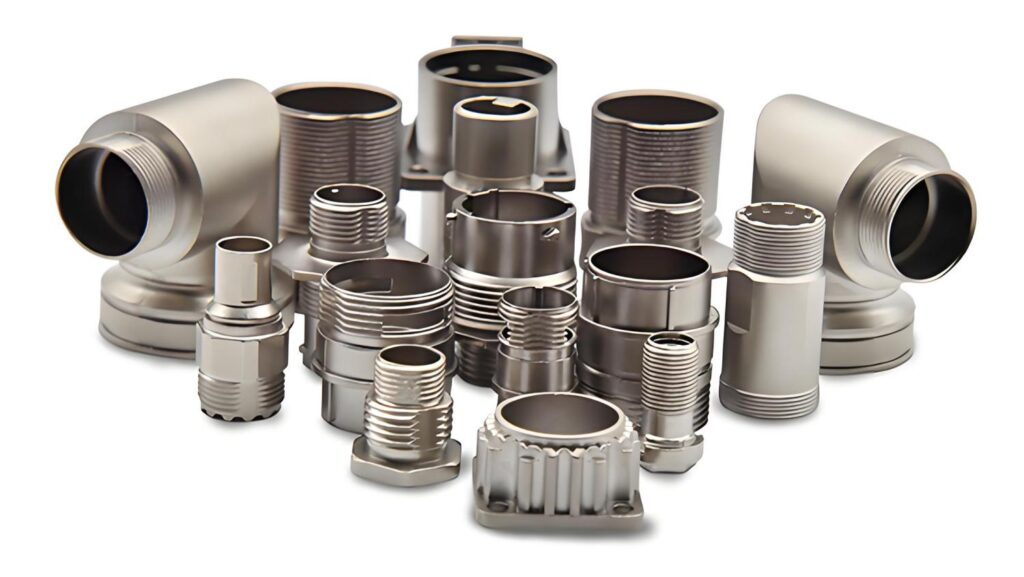
The melting point of zinc directly influences how it is used across industries:
- Die Casting: Zinc alloys are widely used for producing intricate components in automotive, electronics, and household appliances due to their low melting point and high fluidity.
- Galvanization: While galvanizing does not require zinc to be fully molten, understanding its melting point ensures proper coating processes and material integrity.
- Alloy Production: Zinc’s role in creating brass, zamak, and zinc-aluminum alloys is essential for manufacturing parts requiring strength, corrosion resistance, and precision.
- Recycling and Sustainability: The relatively low melting point makes zinc highly recyclable, aligning with the global push for sustainable manufacturing practices.
These applications underline zinc’s importance not just as a raw material but as a cornerstone of efficient and cost-effective production methods.
Conclusion
Zinc’s melting point of 419.5°C is a defining characteristic that makes it practical for casting, alloy production, and protective applications. Its ability to blend with other metals further expands its industrial value, enabling the creation of alloys tailored for strength, corrosion resistance, and efficiency.
For companies working in machining, precision manufacturing, and metal processing, understanding zinc’s melting point is more than a scientific fact—it is a key to achieving consistency, quality, and sustainability.
At Precionn, expertise in machining and advanced manufacturing ensures that zinc and its alloys are processed with accuracy and care. By combining industry knowledge with state-of-the-art technology, Precionn delivers reliable solutions for international customers seeking precision and durability in every project.

